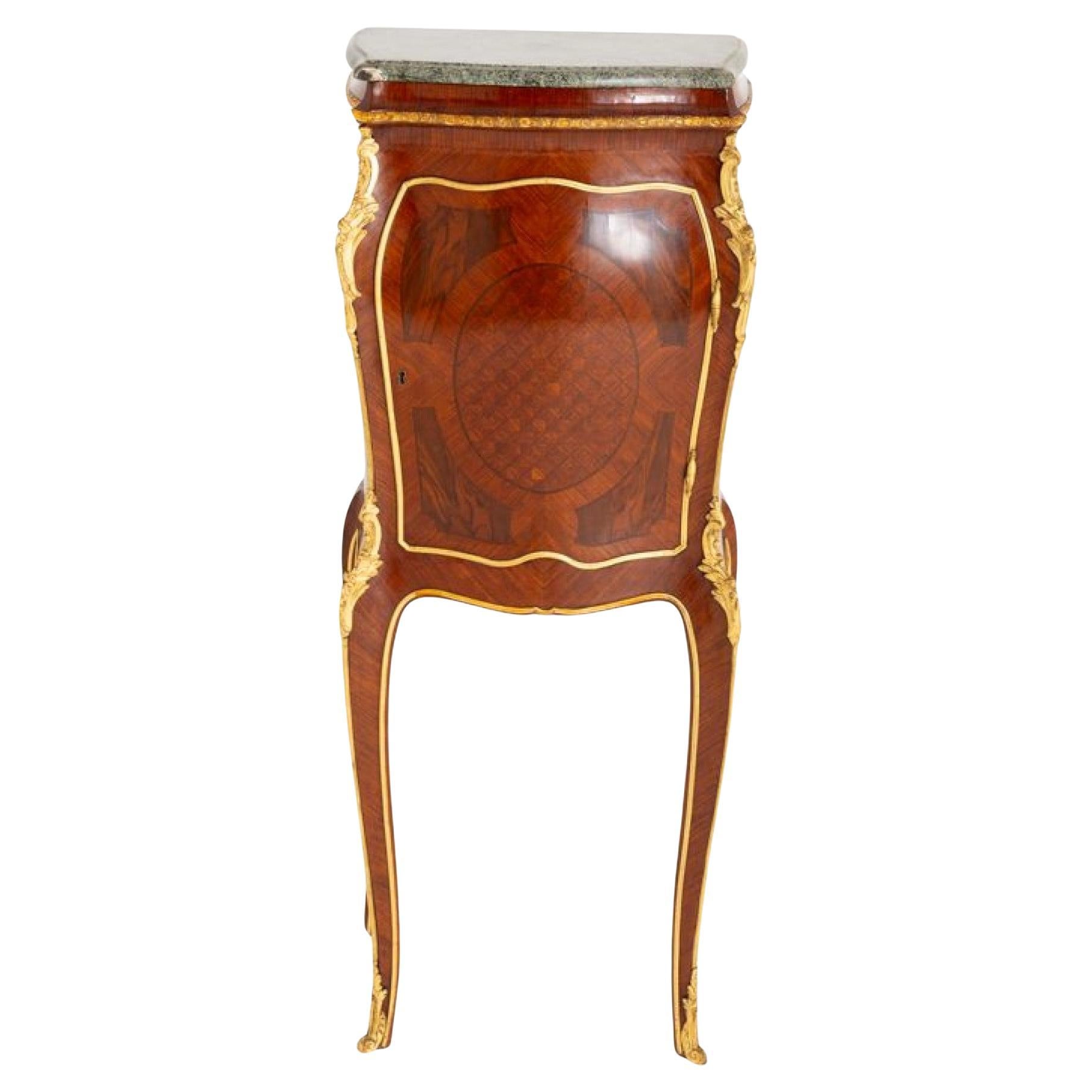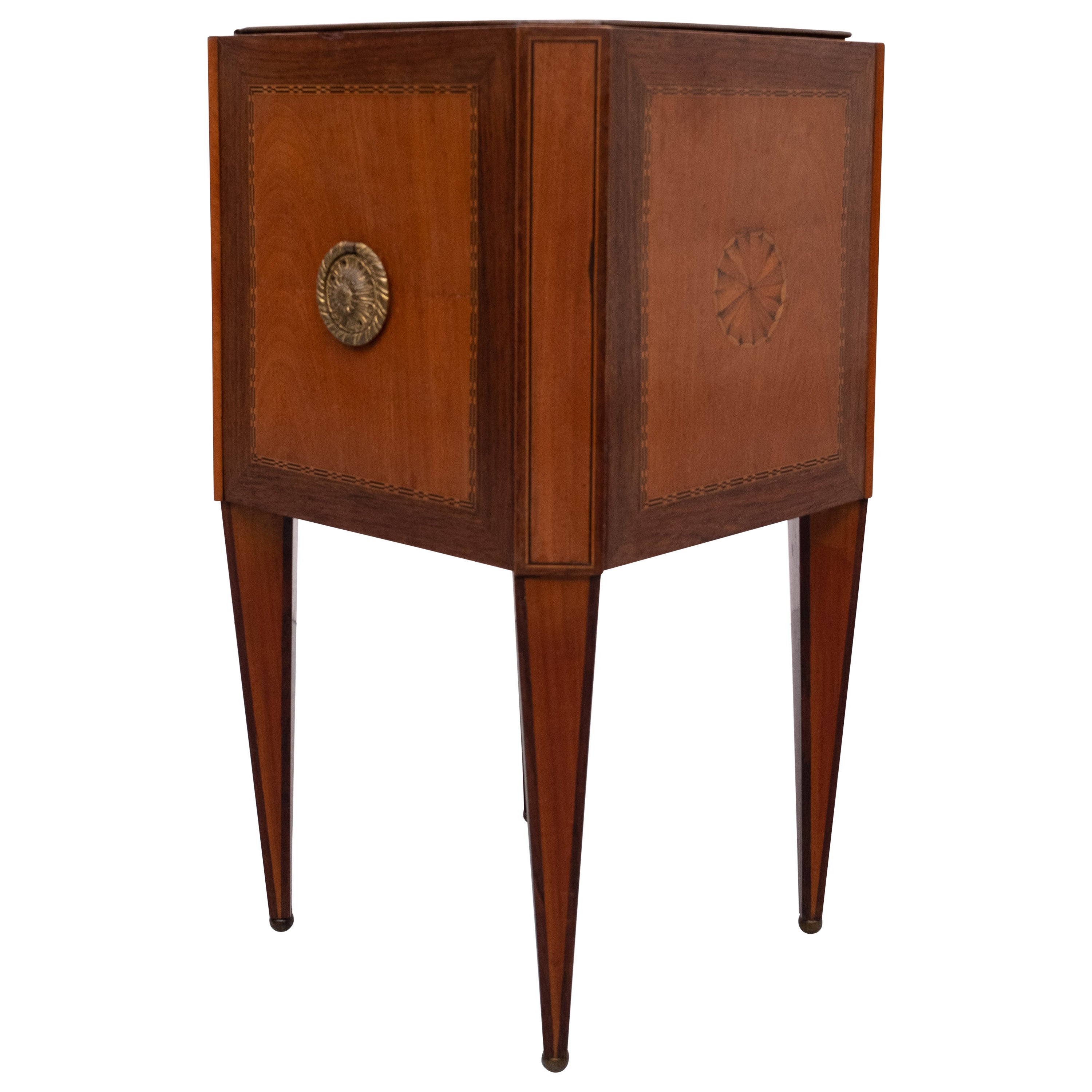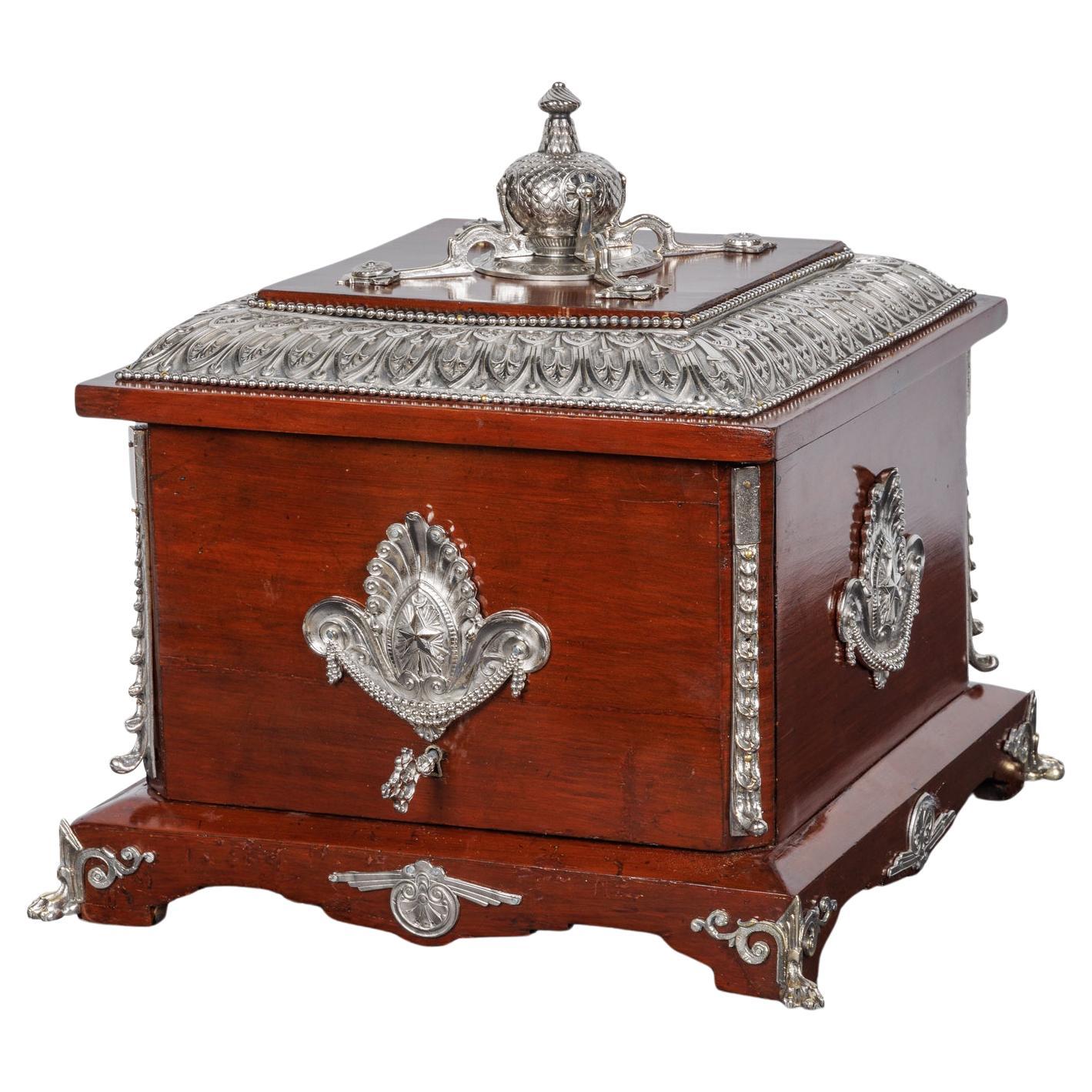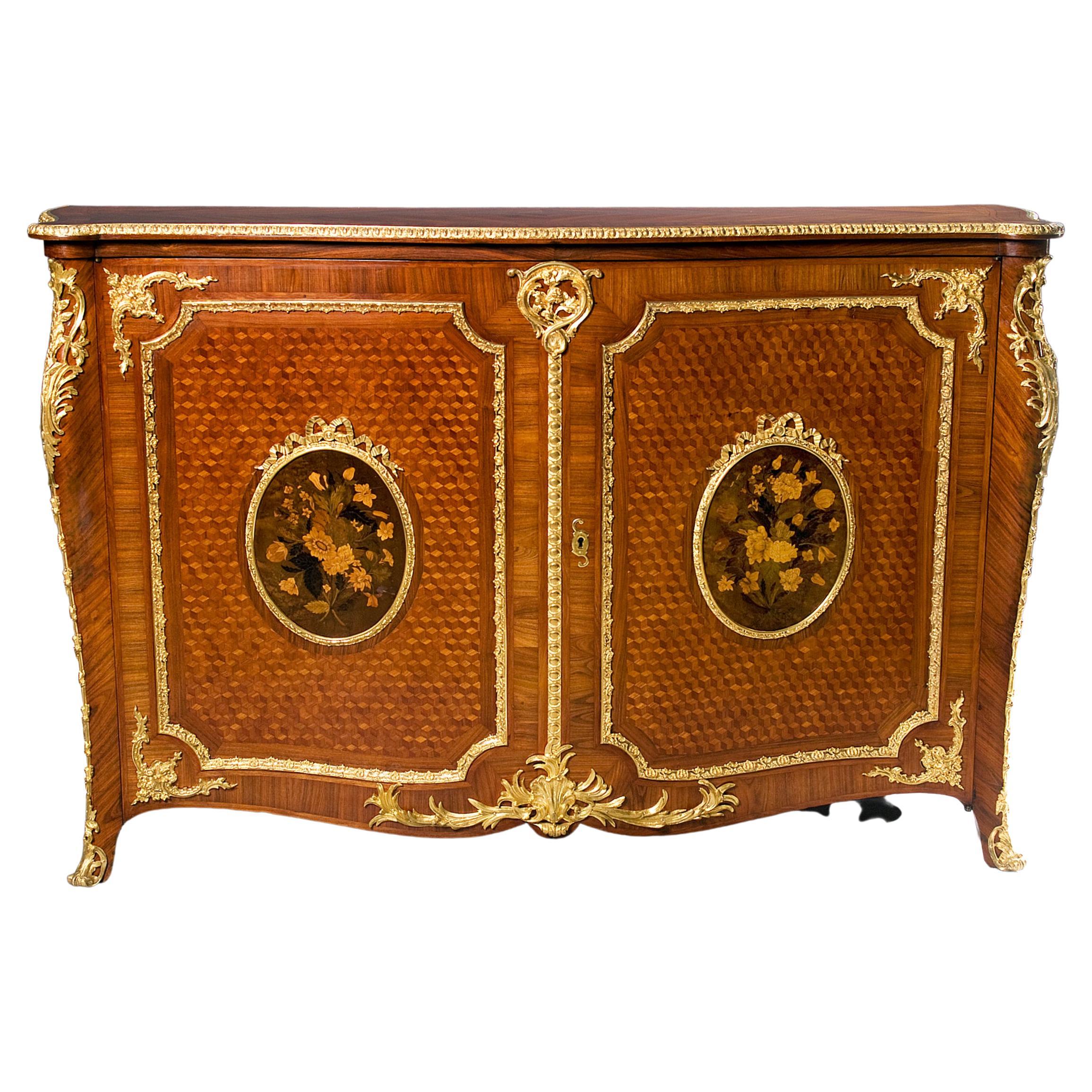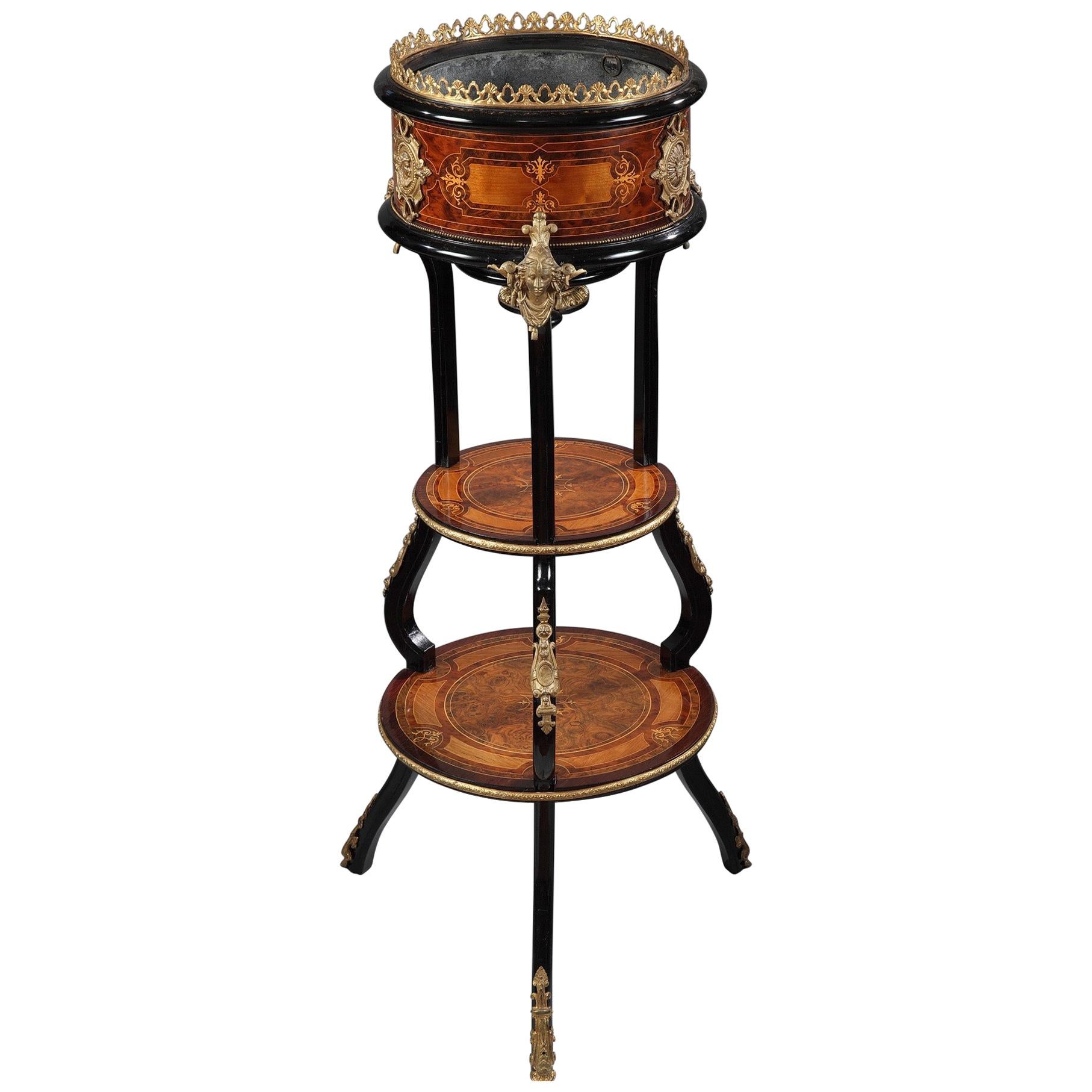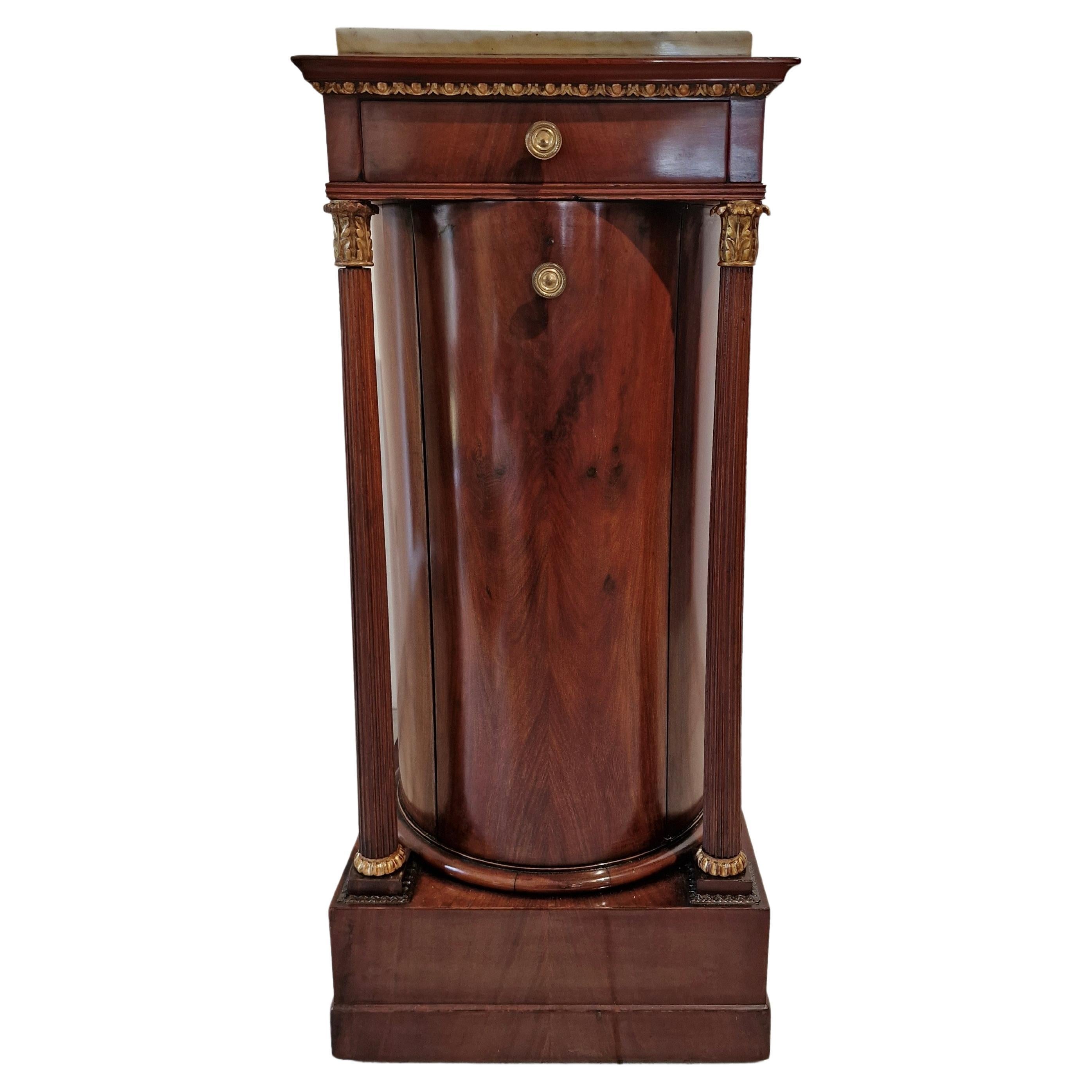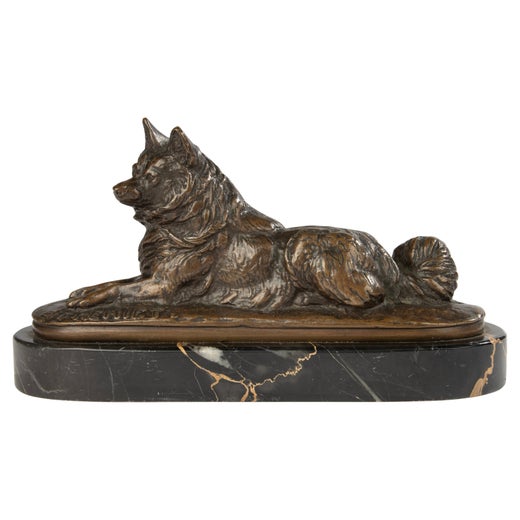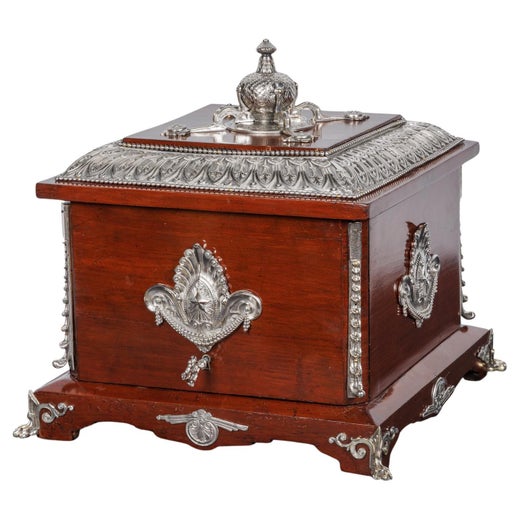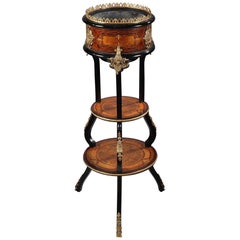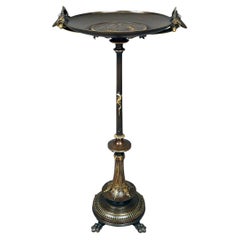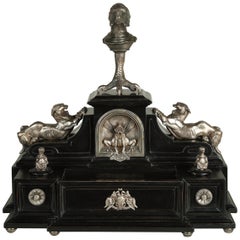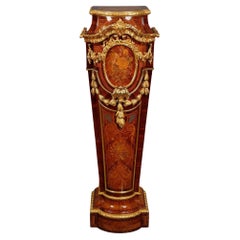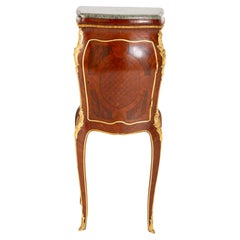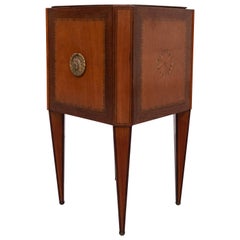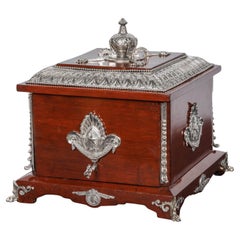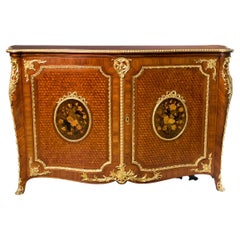Neo-Greek Cigar Cellarette, C.G. Diehl, E. Frémiet & J. Brandely, Circa 1867
Acerca del artículo
- Creador:
- Dimensiones:Altura: 124 cm (48,82 in)Anchura: 55 cm (21,66 in)Profundidad: 42 cm (16,54 in)
- Estilo:Renacimiento griego (En el estilo de)
- Materiales y técnicas:
- Lugar de origen:
- Época:
- Fecha de fabricación:circa 1867
- Estado:Desgaste acorde con la edad y el uso.
- Ubicación del vendedor:PARIS, FR
- Número de referencia:Vendedor: 13511stDibs: LU3860312491202
Emmanuel Fremiet
Charles-Guillaume Diehl
Charles-Guillaume Diehl fundó su empresa de ebanistería y decoración en el número 19 de la calle Michel-Le-Comte en 1885. Sus talleres producían elegantes muebles de palisandro y tuya y novedades con adornos de bronce y porcelana. Sin embargo, fueron sus cajas de lujo (licoreras, armarios para puros, cajas de juegos, estuches de cachemira, joyeros) las que aseguraron el renombre de Diehl. Ya recompensado con una medalla de bronce en la Exposición Universal de 1855 en París, expuso una jardinera con columnas de porcelana y un mueble para licores en la Exposición de Artes Industriales de 1861. En colaboración con el diseñador Jean Brandely (en activo desde 1867 hasta 1873), Diehl renovó su repertorio decorativo y creó asombrosos muebles de estilo greco, que tuvieron un éxito fulgurante en la Exposición Universal de París de 1867, donde sus armarios obtuvieron también una medalla de plata. Algunos motivos eran tan típicos de la obra de Diehl que fueron ampliamente comentados por el crítico de arte J. Mesnard en su libro "Les Merveilles de l'Exposition Universal de 1867". Escribe sobre una mesa en la que "el colgante con ganchos y el motivo radiante en forma de abanico que adorna el entablamento están grabados con amor" y un joyero en el que "la cabeza de fino estilo griego constituye la parte esencial de la fina ornamentación de bronce dorado". Para esta Exposición Universal, Diehl también se asoció con dos famosos escultores: Emile Guillemin (1841-1907), que esculpió el relieve de un aparador de caoba con bronces dorados galvánicos, y Emmanuel Frémiet (1824-1910), que ejecutó el bajo relieve de un medallero de cedro con marquetería y bronces plateados. Diehl fue recompensado de nuevo con una medalla de honor en la Exposición Central de la Unión de 1869 y con una medalla de progreso en la Exposición Universal de Viena de 1873. Colmado de elogios por parte de la crítica, Diehl está considerado uno de los artistas más innovadores del siglo XIX. Su última aparición fue en la Exposición Universal de París de 1878, donde presentó fuera de concurso sus creaciones más recientes, entre ellas una mesa de trabajo en marquetería, que con su motivo naturalista de saltamontes anticipaba el Art Nouveau.
- EnvíoRecuperando presupuesto…Envío desde: PARIS, Francia
- Política de devolución
Más de este vendedor
Ver todoAntiguo, Década de 1870, Francés, Renacimiento griego, Jardineras y macetas
Bronce
Antiguo, Década de 1860, Francés, Renacimiento griego, Gueridón
Bronce
Antiguo, Década de 1860, Francés, Renacimiento griego, Tinteros
Cobre
Antiguo, Década de 1860, Francés, Napoleón III, Pedestales y columnas
Bronce
Antiguo, Década de 1880, Francés, Luis XVI, Secretaires
Bronce
Antiguo, Década de 1860, Francés, Gueridón
Mármol, Bronce
También te puede gustar
Antiguo, Década de 1870, Imperio, Gabinetes
Madera
Antiguo, Década de 1860, Holandés, Luis XVI, Jardineras y macetas
Madera
Antiguo, siglo XIX, Francés, Napoleón III, Cajas de puros y humidores
Bronce
Antiguo, Mediados del siglo XIX, Francés, Napoleón III, Bufetes
Bronce
Antiguo, Década de 1810, Italiano, Imperio, Mesas auxiliares
Mármol
Antiguo, Década de 1790, Inglés, Jorge III, Revisteros y soportes
Caoba
